Gypsy moth (Lymantria dispar) is a serious forest pest and is responsible for killing millions of oak and other species of trees across the state.
The story of the gypsy moth’s presence in Pennsylvania goes back more than 150 years when a researcher from Massachusetts, Etienne L. Trouvelot, imported them from Europe in 1869.
Trouvelot thought he could breed the gypsy moth with the silkworm moth to produce a superior silk-producing hybrid, but the gypsy moth caterpillars escaped -- commencing an American invasion with profound consequences.
Arrival to Pennsylvania
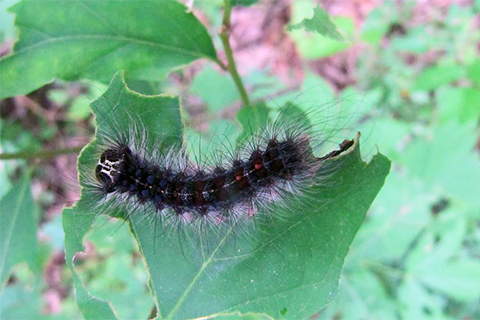
Gypsy moths were first documented in Pennsylvania in 1932 in Lackawanna and Luzerne counties, 63 years after their arrival to North America from Europe.
As their numbers increased, foresters became increasingly aware of the threat they posed to the commonwealth’s forests.
Widespread Defoliations

Gypsy moth larvae are voracious feeders, and outbreaks lead to major defoliations throughout affected areas of forest.
Bare tree canopies, droppings from gypsy moths that sound like falling rain, and forest floors covered in snips of leaf confetti are typical and disturbing forest conditions during a gypsy moth outbreak.
A severe outbreak leaves a Pennsylvania forest canopy completely barren, as if spring never began.
Oaks are Preferred
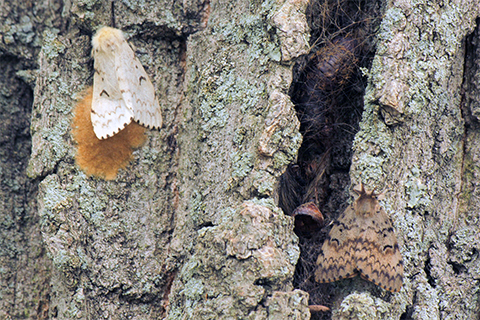
Although gypsy moth caterpillars will feed on the leaves of hundreds of different tree species, they seem to prefer our highly valuable oaks.
The widespread loss of leaves of an oak tree in consecutive years will often result in its death. When larger tracts in oak-dominated state forests are lost to gypsy moths, salvage cuts often follow to utilize the wood.
The resulting lower oak abundance changes the composition of the forest and alters its ability to sustain insects and wildlife.
Although oaks are preferred by gypsy moth caterpillars, heavy infestations result in non-selective feeding -- even conifers like white pine and eastern hemlock are not spared, greatly affecting forest health.
Monitoring and Suppression
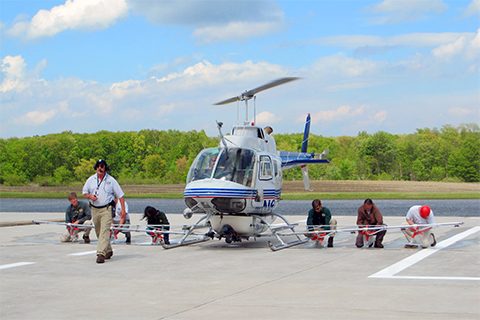
From the 1930s to the early 1960s, mounting forest impacts from gypsy moths gave rise to a monitoring program in 1968 -- a function that is still performed by DCNR’s Bureau of Forestry today.
Monitoring efforts are more accurately known as egg mass surveys, where foresters count gypsy moth egg masses in designated areas to determine population levels throughout the commonwealth, and the need for treatment the following year.
In 1972, the then-named Department of Environmental Resources (now DCNR) implemented the first spraying suppression effort, resulting in the treatment of more than 25,000 acres of forest.
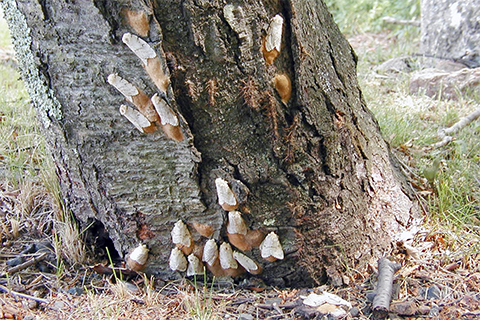
Since the 1970s, the bureau’s suppression work has followed the boom and bust cycle of gypsy moth outbreak years, treating as necessary to reduce their abundance.
Suppression efforts twice surged during the early 1980s and 1990s, when acres treated approached one million for each three-year period.
Although peak years were again witnessed in 2001, 2008, and from 2013 to 2015, acres defoliated (and then needing to be treated) paled in comparison to the extremes seen in the 1980s and 1990s -- testifying to the success of the program and the effect of a new ally in the form of gypsy moth fungus disease.
Gypsy Moths and Recent Years
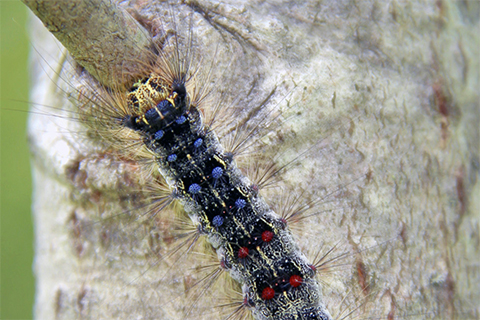
Egg mass surveys in 2019 revealed data indicating no need for suppression spraying in 2020.
Last year’s surveys showed a need for suppression treatment this year, and DCNR’s Bureau of Forestry plans to aerially treat more than 200,000 acres this spring.
Gypsy moths are likely here to stay in Pennsylvania and will continually require suppression and monitoring efforts.
Their environmental and economic impact to the commonwealth is undeniable, and sobering evidence on the danger of introduced, invasive species.
What You Can Do
Although complete eradication of gypsy moths seems unlikely, the effects of outbreaks of this pest can still be alleviated.
You can help by learning to identify and kill them during their moth and larval stages.
Eliminate gypsy moth egg masses by scraping them into a container, sealing, and disposing of them.
Homeowners and forest landowners also can use the tips and information found on the DCNR’s gypsy moth web page.
Learn more about invasive pests and other threats to our forests and trees at the DCNR website.